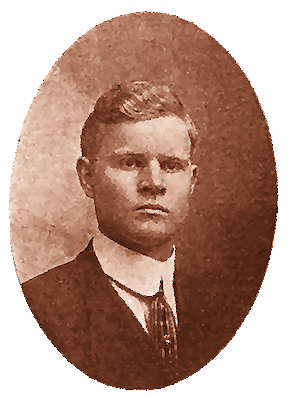Difference between revisions of "Charles Redd"
(→External Sources) |
|||
| Line 29: | Line 29: | ||
He and his wife Annaley Naegle Redd, had nine children, eight of whom they raised to adulthood. They also had a home in Provo, Utah, where he died on March 30, 1975. | He and his wife Annaley Naegle Redd, had nine children, eight of whom they raised to adulthood. They also had a home in Provo, Utah, where he died on March 30, 1975. | ||
| − | [[Leonard J. Arrington]] wrote the biography | + | [[Leonard J. Arrington]] wrote the biography ''Utah’s Audacious Stockman: Charles Redd''. |
[[Category:Mormon Life and Culture]] | [[Category:Mormon Life and Culture]] | ||
Revision as of 18:21, 29 October 2021
Visitors to the Brigham Young University library may pass by the Charles Redd Center for Western Studies and wonder who he was. He was a western rancher, philanthropist, and political and community leader.
Charles Redd was born on May 8, 1889, in Bluff, Utah, where he spent his childhood and youth. His parents weren’t sure he would live past infancy, so they didn’t give him a middle name. However, he thrived and went on to attend Brigham Young High School and earned an agriculture diploma. The caption under his photograph in the yearbook read:
- Charles was raised among the lofty mountains of San Juan and was early inspired with high ideals. He has been our class president and has represented us in every phase of school life. Member of Student Body Executive Committee. A leader and a pusher.
After his graduation, Charlie served a full-time mission for The Church of Jesus Christ of Latter-day Saints in the Pacific Northwest from 1911 to 1913. After his mission, he enrolled again at Brigham Young High where he received his high school diploma and returned to southern Utah where he managed the La Sal Livestock Company.
He expanded the ranch and eventually became owner. The ranch became the successor to the Redd Ranches. He expanded into western Colorado.
He was a conservationist and inaugurated grass seeding and water management programs.
Redd helped organize and presided over the National Wool Marketing Association. He was chairman of the Utah Water and Power Board, director of Utah Power and Light Company, director of Amalgamated Sugar Company, and director of Pacific National Life Assurance Company. He was also the director of the Cowboy Hall of Fame and the Utah Historical Heritage Foundation.
He was elected to three terms in the Utah Legislature, serving from 1923 to 1931, and was a delegate to three national Republican party conventions.
He also built a store and served as local postmaster for fifty years. He also operated a car and farm implement dealership. He was president of the State Bank of San Juan, president of the first BLM Advisory Board, and a director of the Grayson Cooperative Company, the Blanding Irrigation Company, and the Federal Land Bank.
Redd served as a member of the Board of Trustees of Utah State University, and the Regional Executive Committee of the Boy Scouts of America.
He was awarded the Order of the British Empire by Queen Elizabeth II in recognition of his “long years of business and social contact in the interest of fostering Anglo-American friendship.”[1]
He was named a Cattleman of the Century by the Western Livestock Journal.[2]
In 1972 he established the Lemuel H. Redd Chair in Western History (named for his father) and the Charles Redd Center for Western Studies at Brigham Young University.
He and his wife Annaley Naegle Redd, had nine children, eight of whom they raised to adulthood. They also had a home in Provo, Utah, where he died on March 30, 1975.
Leonard J. Arrington wrote the biography Utah’s Audacious Stockman: Charles Redd.
